The commercial deep fryer market is projected to reach USD 68.72 billion by 2029, driven by the growing demand for fried foods and technological advancements. As the food service industry evolves, selecting the right deep fryer is crucial for efficiency and sustainability.
Table of Contents:
– Understanding the Commercial Deep Fryer Market
– Key Features to Look for in a Commercial Deep Fryer
– Types of Commercial Deep Fryers
– Important Safety Features
– Latest Trends in Commercial Deep Fryers
– Making the Final Decision
Understanding the Commercial Deep Fryer Market

Market Demand and Growth Factors
The commercial deep fryer market is experiencing significant growth, driven by the increasing demand for fried foods in various food service establishments. According to the Global Commercial Food Service Equipment Market report, the market is expected to reach USD 68.72 billion by 2029, up from USD 36.24 billion in 2022, with a CAGR of 8.18% during the forecast period. This growth is attributed to the rising trend of eating out and the expansion of quick-service restaurants (QSRs) globally.
Technological advancements in commercial deep fryers are also contributing to market growth. Innovations such as energy-efficient models and fryers with advanced temperature control systems are becoming increasingly popular. These advancements help food service establishments reduce energy consumption and improve cooking efficiency, which is crucial in a highly competitive market. The focus on sustainability and energy efficiency is further supported by regulatory standards that encourage the adoption of eco-friendly equipment.
Urbanization and changing consumer preferences are additional factors driving the demand for commercial deep fryers. As urban populations grow, the number of food service establishments increases, leading to higher demand for commercial kitchen equipment. Moreover, consumers’ preference for convenience and quick-service dining options has led to a surge in the number of QSRs, which rely heavily on deep fryers for their menu offerings.
Key Players in the Industry
The commercial deep fryer market is highly competitive, with several key players dominating the industry. Major companies such as Electrolux AB, Haier Group, and Ali Group are leading the market with their innovative products and extensive distribution networks. These companies invest heavily in research and development to introduce advanced deep fryers that meet the evolving needs of food service establishments.
Electrolux AB, for instance, offers a range of energy-efficient deep fryers with features such as automatic oil filtration and advanced temperature control systems. Haier Group, another key player, focuses on providing durable and reliable deep fryers that cater to the high-volume demands of QSRs and full-service restaurants. Ali Group, known for its diverse product portfolio, offers deep fryers with modular designs that allow for customization based on specific kitchen requirements.
The competitive landscape of the commercial deep fryer market is characterized by strategic partnerships, mergers, and acquisitions. Companies are collaborating to expand their product offerings and enhance their market presence. For example, the acquisition of smaller, specialized manufacturers allows larger companies to integrate innovative technologies and expand their customer base.
Regional Market Analysis
The commercial deep fryer market exhibits significant regional variations, with North America, Europe, and Asia-Pacific being the major markets. North America, particularly the United States, dominates the market due to its well-established food service industry and high adoption of advanced kitchen equipment. The region’s market is expected to grow steadily, driven by the increasing number of QSRs and the demand for energy-efficient appliances.
Europe is another prominent market for commercial deep fryers, with countries like Germany, France, and the United Kingdom leading the way. The market in Europe is driven by stringent food safety regulations and the growing trend of sustainable dining practices. The focus on reducing energy consumption and adhering to environmental standards is encouraging the adoption of advanced deep fryers in the region.
The Asia-Pacific region is witnessing rapid growth in the commercial deep fryer market, fueled by urbanization and the expansion of the food service industry. Countries like China, India, and Japan are experiencing a surge in the number of food service establishments, leading to increased demand for commercial kitchen equipment. The market in this region is expected to grow at a higher rate compared to other regions, driven by the rising disposable incomes and changing consumer lifestyles.
Key Features to Look for in a Commercial Deep Fryer
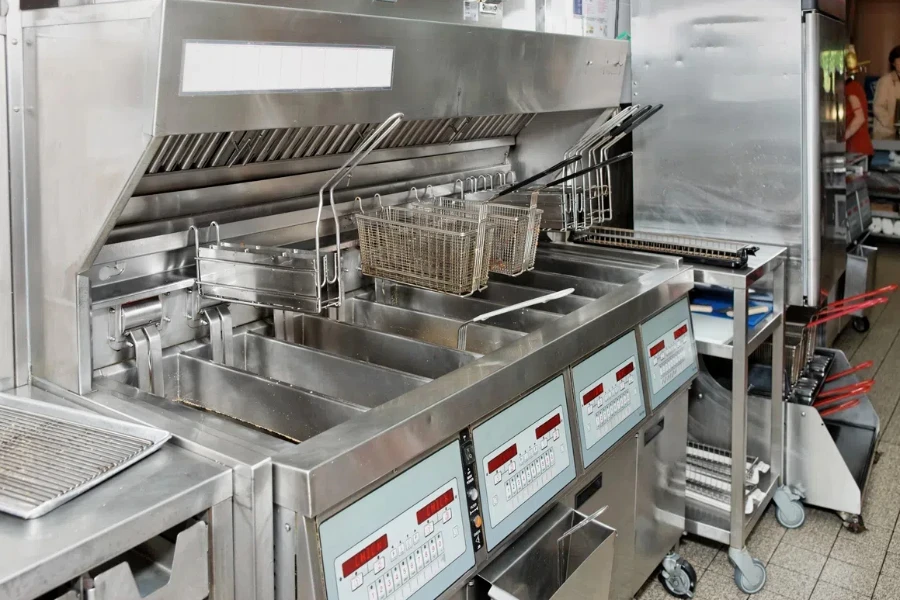
Capacity and Size
When selecting a commercial deep fryer, capacity and size are critical factors to consider. The capacity of a deep fryer determines the volume of food that can be cooked at one time, which is essential for high-volume food service establishments. Fryers with larger capacities, such as those that can hold up to 50 pounds of oil, are ideal for busy kitchens that need to produce large quantities of fried foods quickly.
The size of the deep fryer also plays a significant role in its suitability for different kitchen layouts. Compact, countertop models are suitable for smaller kitchens or establishments with limited space, while larger, floor-standing models are better suited for high-volume operations. The choice of size and capacity should align with the specific needs and constraints of the food service establishment.
Additionally, the design of the deep fryer can impact its efficiency and ease of use. Models with multiple baskets allow for simultaneous cooking of different food items, improving productivity. Fryers with built-in filtration systems help maintain oil quality and extend its lifespan, reducing operational costs and ensuring consistent food quality.
Energy Efficiency
Energy efficiency is a crucial consideration for commercial deep fryers, as it directly impacts operational costs and environmental sustainability. Energy-efficient deep fryers are designed to minimize energy consumption while maintaining optimal cooking performance. Features such as high-efficiency burners, insulated fry pots, and advanced heat recovery systems contribute to reduced energy usage.
The adoption of energy-efficient deep fryers is supported by regulatory standards and incentives aimed at promoting sustainability in the food service industry. For example, fryers with the ENERGY STAR certification meet strict energy efficiency guidelines set by regulatory authorities. These fryers not only help reduce energy bills but also contribute to a lower carbon footprint, aligning with the growing emphasis on sustainability.
Manufacturers are continuously innovating to enhance the energy efficiency of their products. Advanced technologies such as infrared heating and induction cooking are being integrated into commercial deep fryers to improve energy efficiency and cooking performance. These innovations help food service establishments achieve their sustainability goals while maintaining high standards of food quality.
Temperature Control and Recovery Time
Precise temperature control is essential for achieving consistent cooking results and ensuring food safety. Commercial deep fryers with advanced temperature control systems allow operators to set and maintain the desired cooking temperature accurately. This feature is particularly important for establishments that serve a variety of fried foods, as different items may require specific cooking temperatures.
Recovery time, the time it takes for the oil to return to the set temperature after adding food, is another critical factor. Fryers with fast recovery times ensure that the cooking process is not interrupted, leading to higher productivity and better food quality. Models with high-efficiency heating elements and advanced heat transfer technologies offer quicker recovery times, making them ideal for busy kitchens.
In addition to temperature control and recovery time, safety features such as automatic shut-off and overheat protection are important considerations. These features help prevent accidents and ensure safe operation, which is crucial in a commercial kitchen environment. Investing in deep fryers with reliable temperature control and safety features can enhance operational efficiency and reduce the risk of foodborne illnesses.
Types of Commercial Deep Fryers
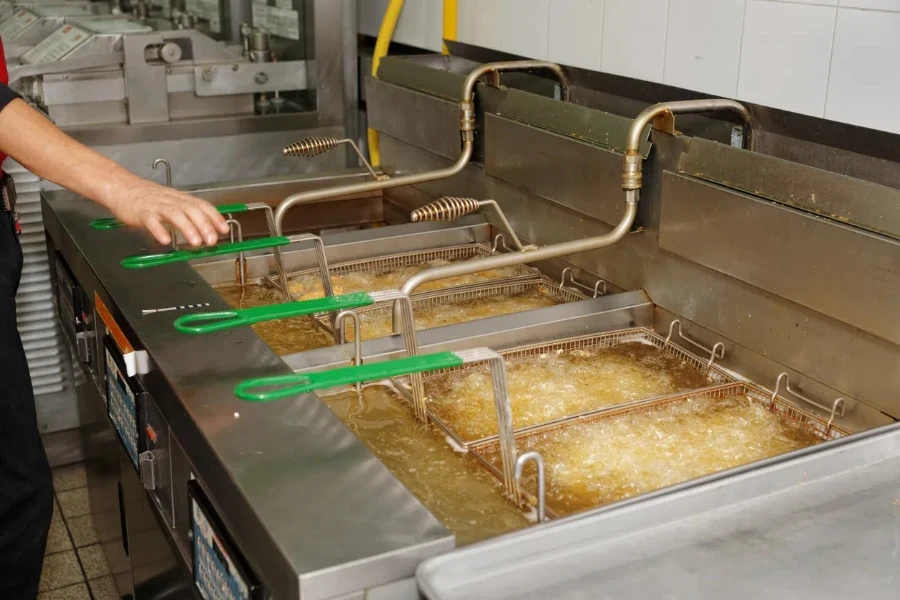
Countertop Fryers
Countertop fryers are compact and versatile, making them ideal for small kitchens or establishments with limited space. These fryers are designed to sit on a countertop, providing a convenient and efficient solution for frying smaller quantities of food. Countertop fryers are commonly used in cafes, food trucks, and small restaurants where space is at a premium.
Despite their smaller size, countertop fryers offer many of the same features as larger models, including precise temperature control and quick recovery times. They are available in both electric and gas versions, allowing operators to choose the best option based on their kitchen setup. The portability and ease of use of countertop fryers make them a popular choice for establishments that require flexibility in their kitchen operations.
Countertop fryers are also cost-effective, making them an attractive option for businesses with budget constraints. They require less oil and energy compared to larger models, reducing operational costs. Additionally, their compact design allows for easy cleaning and maintenance, which is essential for maintaining food quality and safety in a busy kitchen environment.
Floor Fryers
Floor fryers are larger, high-capacity models designed for high-volume food service establishments. These fryers are typically used in full-service restaurants, fast-food chains, and institutional kitchens where large quantities of fried foods are prepared daily. Floor fryers are available in various sizes and configurations, including single and multiple-basket models, to accommodate different cooking needs.
One of the key advantages of floor fryers is their ability to handle high volumes of food efficiently. They are equipped with powerful heating elements and advanced temperature control systems to ensure consistent cooking results. Floor fryers also offer features such as built-in filtration systems and programmable controls, which enhance their functionality and ease of use.
While floor fryers require a larger initial investment compared to countertop models, their high capacity and efficiency make them a cost-effective solution for busy kitchens. The ability to cook large quantities of food quickly and consistently helps food service establishments meet customer demand and maintain high standards of food quality. Additionally, the durability and reliability of floor fryers ensure long-term performance and reduced maintenance costs.
Specialty Fryers
Specialty fryers are designed for specific types of frying applications, offering unique features and capabilities tailored to particular food items. Examples of specialty fryers include pressure fryers, donut fryers, and ventless fryers. These fryers are commonly used in establishments that specialize in certain types of fried foods, such as fried chicken, donuts, or tempura.
Pressure fryers, for instance, use a sealed cooking chamber to cook food under pressure, resulting in faster cooking times and juicier, more flavorful results. Donut fryers are designed with specific features such as conveyor belts and precise temperature control to ensure consistent quality and appearance of donuts. Ventless fryers are equipped with built-in ventilation systems, allowing them to be used in locations without external ventilation.
Specialty fryers offer several advantages, including improved cooking performance and the ability to produce high-quality, consistent results for specific food items. They are an essential investment for establishments that focus on niche markets or have specialized menu offerings. By using the right type of specialty fryer, food service operators can enhance their product offerings and meet the unique preferences of their customers.
Important Safety Features
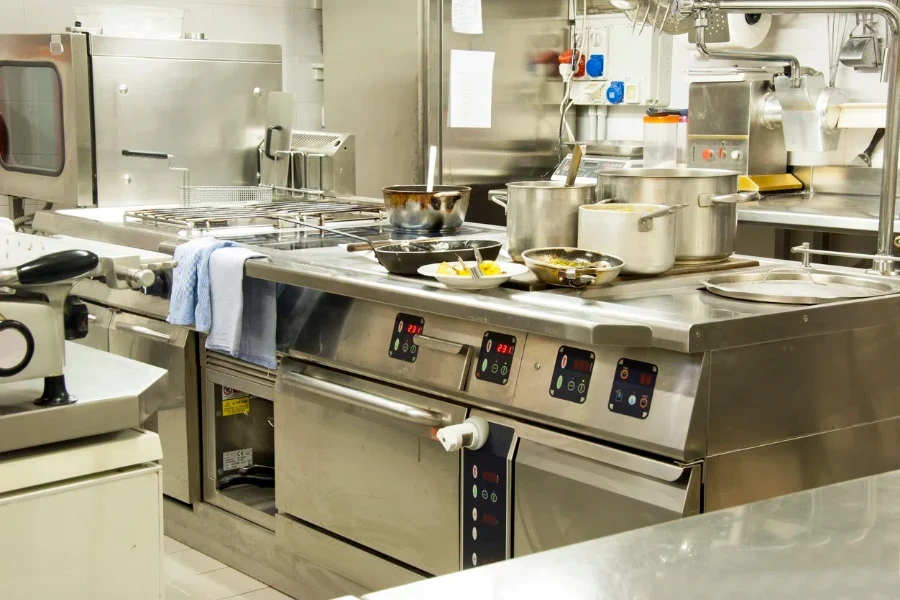
Automatic Shut-off
Automatic shut-off is a critical safety feature in modern machinery. This function ensures that the equipment powers down automatically when it detects a malfunction or when it has been idle for a specified period. For instance, in commercial deep fryers, an automatic shut-off can prevent overheating and potential fire hazards, thereby protecting both the equipment and the operators.
The integration of automatic shut-off systems in machinery is often governed by industry standards and regulations. These systems are typically controlled by microprocessors that monitor various parameters such as temperature, pressure, and operational time. In laboratory freezers, for example, automatic shut-off mechanisms can prevent the freezer from running continuously, which helps in maintaining the desired temperature and conserving energy.
Moreover, automatic shut-off features are essential for compliance with safety certifications and standards. Equipment that includes this feature is often more reliable and preferred by buyers who prioritize safety. In the context of laboratory freezers, automatic shut-off can be crucial in preventing the degradation of sensitive materials like vaccines and blood products, which require precise temperature control.
Overheat Protection
Overheat protection is another vital safety feature in machinery, designed to prevent equipment from reaching dangerous temperature levels. This feature is particularly important in devices that generate significant heat during operation, such as commercial deep fryers and laboratory freezers. Overheat protection systems typically include sensors that monitor the temperature and activate cooling mechanisms or shut down the equipment if the temperature exceeds safe limits.
In commercial deep fryers, overheat protection can prevent oil from reaching its flash point, thereby reducing the risk of fire. These systems often use thermal cut-off switches or thermostats to interrupt the power supply when the temperature gets too high. Similarly, in laboratory freezers, overheat protection ensures that the internal environment remains stable, which is crucial for the preservation of sensitive materials.
The implementation of overheat protection is often a requirement for meeting industry safety standards. For example, laboratory freezers used in pharmaceutical applications must comply with stringent regulations to ensure the integrity of stored products. Overheat protection not only enhances safety but also extends the lifespan of the equipment by preventing thermal stress and damage.
Ventilation Systems
Effective ventilation systems are essential for maintaining safe and efficient operation of machinery. These systems help to dissipate heat, remove fumes, and ensure a consistent airflow, which is crucial for both the equipment and the working environment. In commercial deep fryers, proper ventilation prevents the accumulation of grease vapors and reduces the risk of fire.
Ventilation systems in machinery often include components such as exhaust fans, ductwork, and air filters. These components work together to remove hot air and contaminants from the equipment. For instance, laboratory freezers may be equipped with rear-wall plenums and heatsinks to enhance airflow and maintain uniform temperature distribution within the chamber.
The design and implementation of ventilation systems must comply with industry standards and regulations. Proper ventilation not only improves safety but also enhances the performance and efficiency of the equipment. In laboratory settings, effective ventilation is crucial for preventing the buildup of hazardous fumes and ensuring a safe working environment for personnel.
Latest Trends in Commercial Deep Fryers
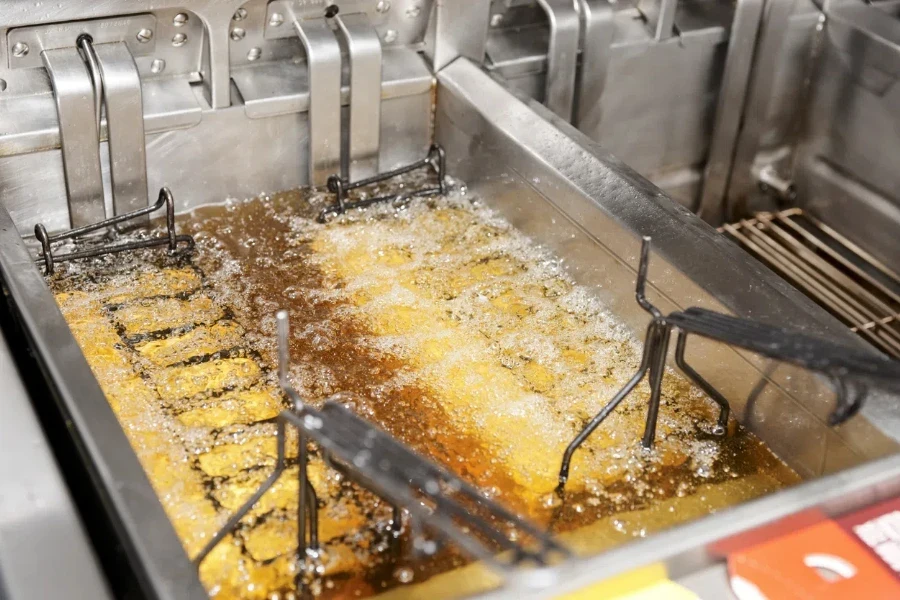
Smart Technology Integration
The integration of smart technology in commercial deep fryers is revolutionizing the industry. These advanced systems offer features such as remote monitoring, automated cooking processes, and predictive maintenance. For example, smart deep fryers can be connected to the internet, allowing operators to monitor and control the equipment from a smartphone or computer.
Smart technology enhances the efficiency and consistency of cooking processes. Automated systems can adjust cooking times and temperatures based on the type of food being prepared, ensuring optimal results. Additionally, predictive maintenance features can alert operators to potential issues before they become critical, reducing downtime and maintenance costs.
The adoption of smart technology in commercial deep fryers is driven by the demand for increased efficiency and convenience. These systems not only improve the quality of the food but also enhance operational efficiency. As the industry continues to evolve, the integration of smart technology is expected to become a standard feature in commercial kitchen equipment.
Eco-friendly Fryers
Eco-friendly fryers are gaining popularity as businesses seek to reduce their environmental impact. These fryers are designed to use less energy and produce fewer emissions, making them a more sustainable option. For example, some eco-friendly fryers use advanced insulation materials to retain heat more effectively, reducing energy consumption.
The development of eco-friendly fryers is often driven by regulatory requirements and consumer demand for sustainable products. Manufacturers are incorporating features such as low-energy heating elements and improved oil filtration systems to enhance the efficiency and environmental performance of their fryers. These innovations not only reduce operating costs but also minimize the environmental footprint of commercial kitchens.
The trend towards eco-friendly fryers is expected to continue as businesses prioritize sustainability. By investing in energy-efficient equipment, companies can reduce their operating costs and demonstrate their commitment to environmental responsibility. As a result, eco-friendly fryers are becoming an increasingly attractive option for commercial kitchens.
Making the Final Decision
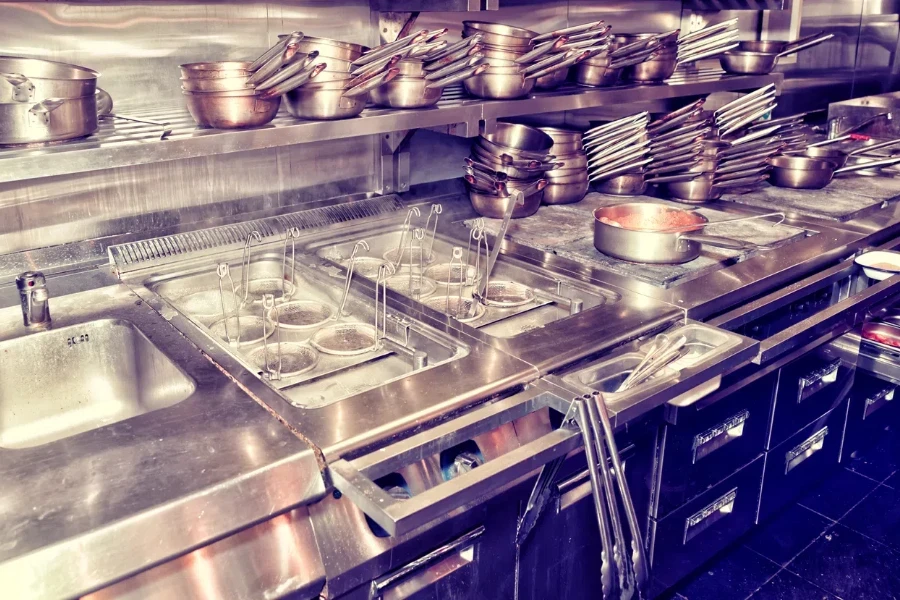
When making the final decision on purchasing machinery, it is crucial to consider both safety features and the latest technological advancements. Buyers should prioritize equipment that offers robust safety mechanisms such as automatic shut-off, overheat protection, and effective ventilation systems. Additionally, staying informed about the latest trends, such as smart technology integration and eco-friendly designs, can help in selecting equipment that meets both operational and sustainability goals.





 Afrikaans
Afrikaans አማርኛ
አማርኛ العربية
العربية বাংলা
বাংলা Nederlands
Nederlands English
English Français
Français Deutsch
Deutsch हिन्दी
हिन्दी Bahasa Indonesia
Bahasa Indonesia Italiano
Italiano 日本語
日本語 한국어
한국어 Bahasa Melayu
Bahasa Melayu മലയാളം
മലയാളം پښتو
پښتو فارسی
فارسی Polski
Polski Português
Português Русский
Русский Español
Español Kiswahili
Kiswahili ไทย
ไทย Türkçe
Türkçe اردو
اردو Tiếng Việt
Tiếng Việt isiXhosa
isiXhosa Zulu
Zulu